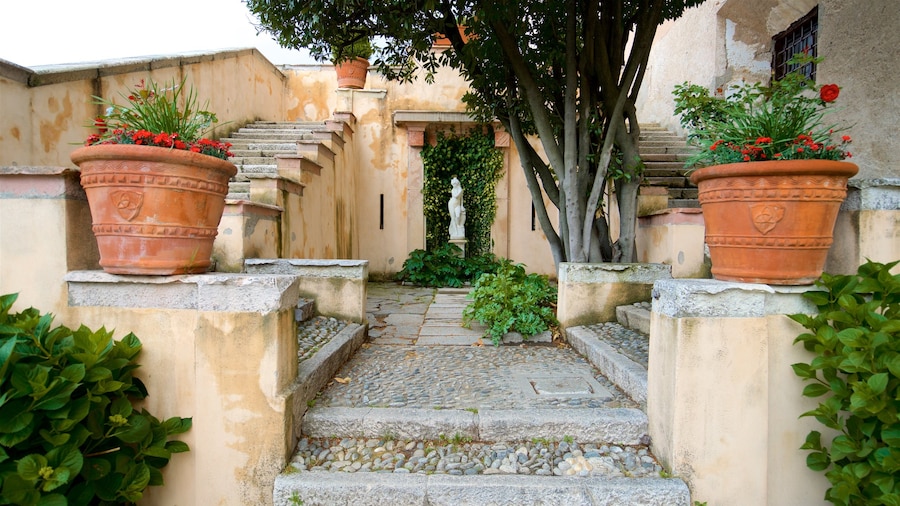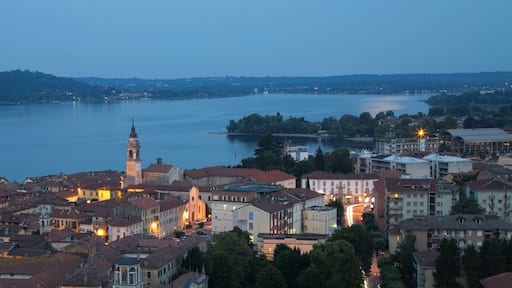Angera is a town and wider commune on the eastern shores of Lake Maggiore. Since Roman times, the town has been a hub and strategic port on the western fringe of Lombardy. Find out how the town’s history is set in the stone structures that speckle the lakeside and learn about the town’s archaeological riches.
Take a stroll around Angera’s old town and note the streets that run perpendicular to the lake. These streets indicate the layout of the ancient Roman town, which was then known as Stazzona. The early town was situated on an important trading route and marked a junction in the transportation of wood and stone bound for the cities in northern Italy. You can still see Angera stone in Milan and Pavia. Visit Angera’s Civic Museum to learn more about the town’s trading history and its 1st-century necropolis.
Continue your stroll down the tree-lined pathways of Angera’s lakeside promenade. Take in expansive views of Lake Maggiore, as well as its pretty islands. Partegora Island is Lombardy’s sole island and a wildlife sanctuary in the lake’s gulf. Architectural highlights on the promenade include the grand Town Hall and the historic Madonna della Riva Sanctuary. On Thursday mornings, attend the town’s weekly street market held on the promenade.
The township is dominated by the imposing Rocca di Angera, a clifftop fortress built high on a stony spur above Angera’s lakeshore. Visit the fortress to see its grand Sala di Giustizia (Hall of Justice), which houses a series of Lombard frescoes. The fortress is also home to a charming Museum of Dolls, which displays more than 1,000 dolls and children’s toys from throughout history. Save some time to explore the fort’s recreated medieval garden.
Angera is 41 miles (66 kilometers) northwest of Milan and is easily reached by car, as well as via intercity bus networks. Visit the town in June for its vivid religious festivals or enjoy the town’s quieter periods in spring and fall. At any time you can enjoy the area’s fantastic local produce, including honey and wine.













